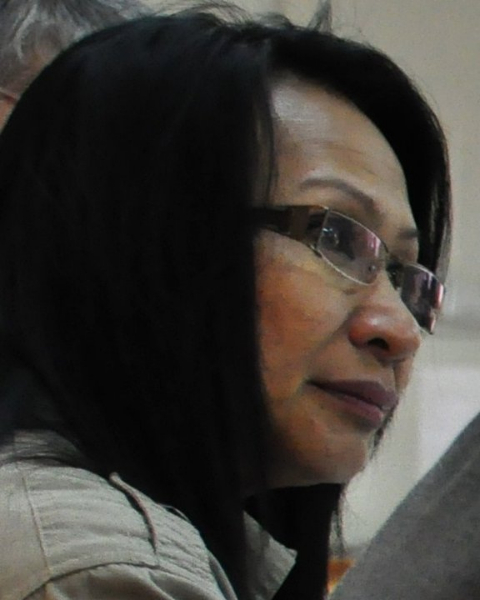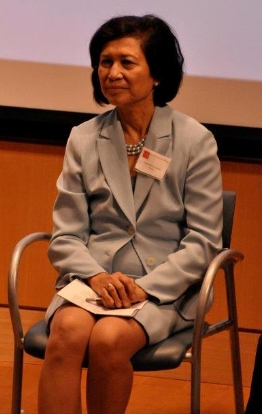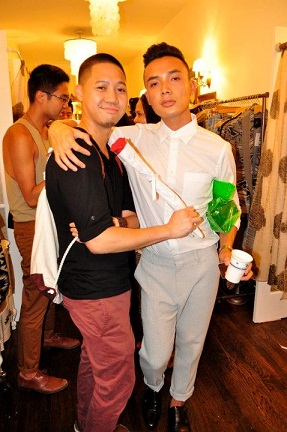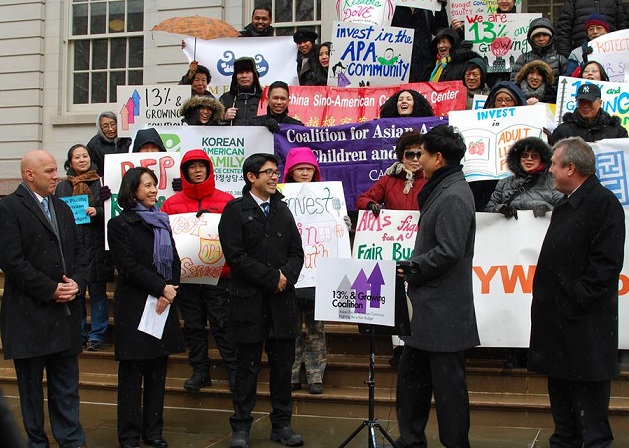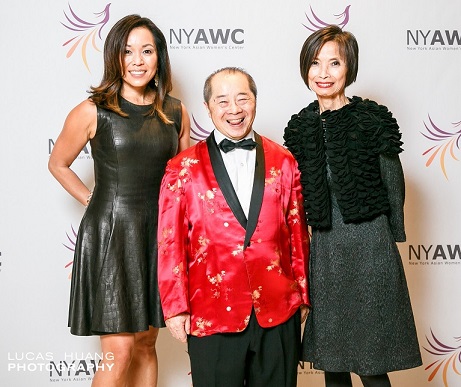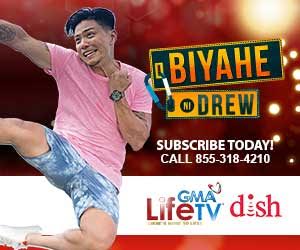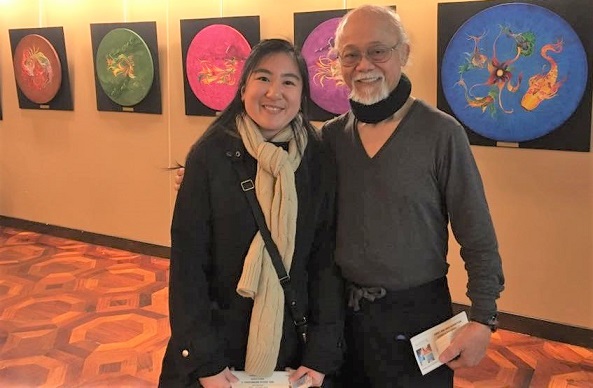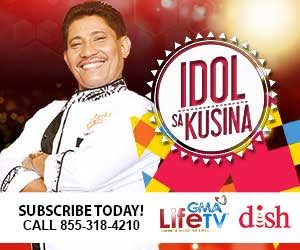Del Bermudez’s art through the eye of a needle
By Cristina DC Pastor
Seventy-four year-old Del Bermudez II from Washington State is holding his first solo exhibit as a needle painter.
At the Philippine Center from December 19 to January 6, 2017, he will showcase his “one of a kind” art some people often associated with embroidery.
“It is not embroidery,” said Del when interviewed by The FilAm. “Needle painting is literally what it says: Painting by picking dab of paint with the needle and applying it on the canvas then blending and harmonizing the paint to the desired color hue using the point of the needle.”
In his solo show, Del will unveil for the first time in New York his Sarimanok Series using his preferred medium: the sewing needle. He used to paint using a palette knife or brush, but found them “restrictive” in most of his strokes. He researched other tools that would allow him to paint in his own way and achieve the style he desired. The sewing needle became his instrument of choice.
The legend of Sarimanok has long been the inspiration for Del’s art, whether he was painting with oils or designing wood carvings. He ran the family’s handwoven fabrics and handicrafts businesses in the Philippines, exported them internationally and to their shops in Seattle when the family became established in the city.
The ‘sarimanok’ is the legendary bird of the Maranao people of Lanao province in the southern island of Mindanao. The legend of Sarimanok, by Del’s retelling, was a spoken narrative about the Sultan celebrating his princess daughter Sari’s birthday. A giant bird swooped down on the palace, scooped the princess, and vanished forever. The Sultan declared that his daughter’s elegant beauty will be immortalized as a magnificent bird. Thus was born ‘Sarimanok’ which in Maranao culture came to symbolize good fortune. (Del prefers to use the ancient spelling ‘Meranao’)
In his paintings, Del depicts the Sarimanok’s glorious imagery through profuse graceful scrolls of leaves, flowers and spiral vine motifs using warm traditional colors and patterns. His Sarimanok Series incorporates the rich flora of the Philippines along with expressions of the colorful traditions and culture of the country.
Del was born in Echague, Isabela and grew up in Baguio City, the youngest and only boy of four siblings. He has a degree in Architecture from St. Louis University.
Choreographer-Dance Educator
In 1964, he joined the world tour of the Bayanihan Philippine National Folk Dance Company. Later, he was appointed as the company’s consultant and researcher by Dr. Lucrecia Reyes Urtula, its choreographer and directress. She was named National Artist for Dance in 1988.
Del founded, directed and choreographed tribal dances through his dance company, The Bermudez KAIBAB Tribal Dance Company, which received an Honorary Award in the 1965 Bibak Canao annual Igorot Festival. While he became involved with the performing arts as dance choreographer and educator, his love for painting was never set aside.
He migrated to the U.S. in 1971 to finally join his parents and sisters at Mercer Island, WA.
“I have been left alone to manage our three shops in Baguio City while studying Architecture,” he said.
He was quite a successful entrepreneur who opened four more businesses of his own until his family decided it was time for the family to all be together. “Because martial law was declared in the Philippines I decided to stay in America.”
He pursued painting after retiring from business three years ago. He joined an art exhibition at the Seattle Center in 2014 where he presented for the first time his Sarimanok Series collection.
A Mercer Island resident for more than three decades now, Del is happily retired with his wife and their three children who are now on their own.
“(Now) I have a chance to pursue my long desired hobby.”

